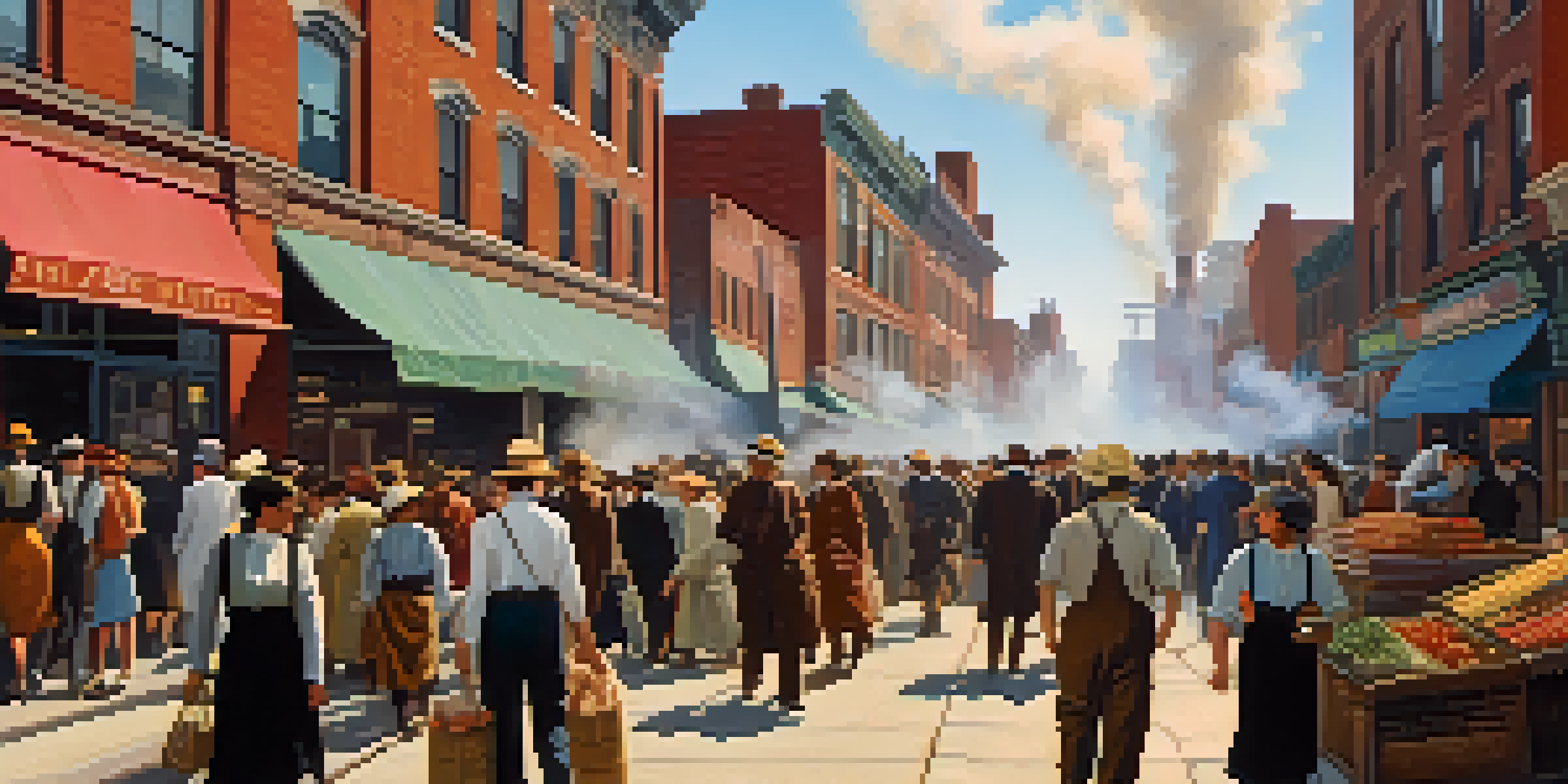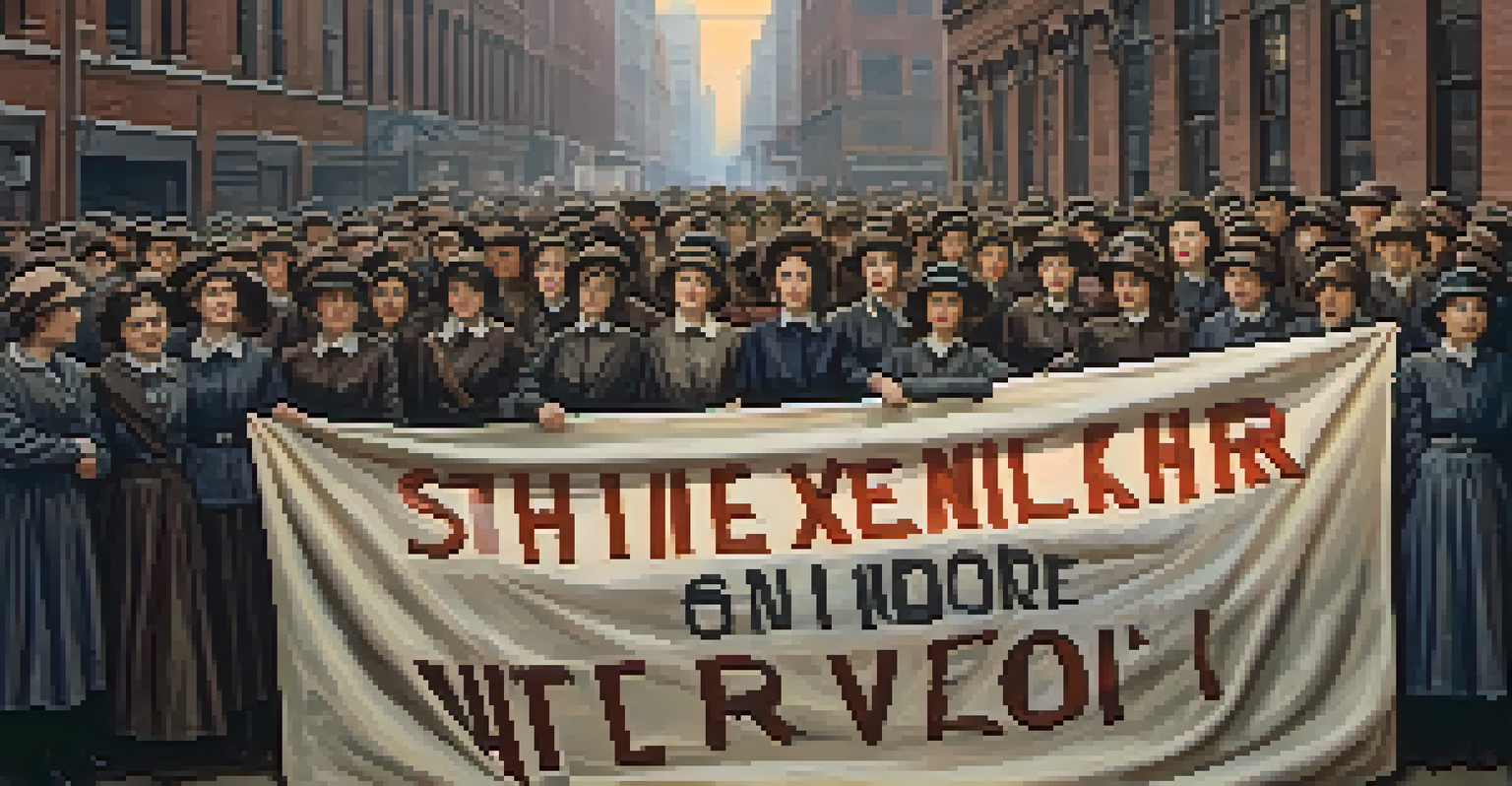Labor Movements: NYC's Role in Shaping Workers' Rights

The Roots of Labor Movements in New York City
New York City has long been a melting pot of cultures and industries, making it a fertile ground for labor movements. The late 19th and early 20th centuries saw an influx of immigrants who filled the factories, sweatshops, and docks, often working under harsh conditions. This environment sparked the need for organized labor to advocate for better wages, hours, and working conditions.
In union there is strength.
In response to the exploitation faced by workers, early unions began to form, fighting for the rights of garment workers, dock workers, and others. The famous Triangle Shirtwaist Factory fire in 1911 highlighted the dangerous working conditions and galvanized public support for labor rights. It was a turning point that led to significant reforms in workplace safety and labor laws.
These early movements laid the groundwork for future labor rights advancements. They showcased the power of collective action and set a precedent for the organized efforts that would follow, making NYC a crucial player in the national labor movement.
Key Strikes That Changed the Labor Landscape
Strikes have been pivotal in shaping labor relations in New York City, illustrating the power of solidarity among workers. One notable example is the 1909 Shirtwaist Strike, also known as the 'Uprising of the 20,000,' when female garment workers protested for better pay and conditions. Their determination not only led to significant concessions from factory owners but also increased visibility for women's rights in the workplace.

Another important strike was the 1934 Longshoremen's Strike, which resulted in the establishment of the International Longshoremen's Association. This event marked a significant shift in labor dynamics, as workers asserted their rights and gained respect as a formidable force in the economy. The strike successfully demonstrated that collective bargaining could lead to substantial improvements in working conditions.
Labor Movements Shaped NYC's Laws
The activism of labor movements in New York City has led to significant legislative changes, including minimum wage laws and workers' rights protections.
These pivotal strikes not only improved conditions for the workers involved but also inspired future generations to advocate for their rights. They underscored the importance of unity and collective action in achieving labor rights, making NYC a beacon for workers nationwide.
The Rise of the CIO and Its Impact on NYC Workers
The Congress of Industrial Organizations (CIO) emerged in the 1930s as a powerful force for labor rights, particularly within industrial sectors. In New York City, the CIO facilitated the organization of workers across various industries, from manufacturing to public services. This was a significant shift from the American Federation of Labor (AFL), which primarily focused on craft unions.
The labor movement was the greatest single force for social change in the 20th century.
The CIO's inclusive approach encouraged the participation of previously unorganized workers, including minorities and women. This broadened the labor movement's reach, fostering a more diverse coalition that could advocate for comprehensive workers' rights. The CIO's efforts in NYC led to improved wages, better working conditions, and the establishment of health and safety regulations.
As a result, the CIO played a crucial role in reshaping the labor landscape in New York City. It not only empowered workers but also set the stage for future labor rights advancements across the country, illustrating the importance of inclusive organizing.
Legislation Born from Labor Movements in NYC
Labor movements in New York City have significantly influenced legislative changes that protect workers' rights. The activism and advocacy of unions have led to landmark laws such as the Fair Labor Standards Act, which established minimum wage and overtime pay. These laws were direct responses to the struggles workers faced and illustrated the impact of organized labor on policy.
Moreover, New York was at the forefront of pioneering labor legislation, including the creation of unemployment insurance and workers' compensation laws. These legal protections emerged from the collective demands of workers who sought security in their employment and relief in times of need. The city's labor movements were instrumental in pushing these critical issues onto the legislative agenda.
Women Pioneered Labor Activism
Women played a crucial role in New York City's labor movements, advocating for rights and better working conditions, which broadened the labor movement's scope.
Today, the legacy of these labor movements continues to influence discussions around workers' rights. NYC's role in shaping labor legislation serves as a reminder of the power of grassroots activism and its ability to create lasting change.
The Role of Women in NYC's Labor Movements
Women have played a crucial role in the labor movements of New York City, often leading the charge for change. From the early garment workers to the suffragettes advocating for equal rights, women have been at the forefront of labor activism. Their participation not only highlighted the specific challenges faced by female workers but also broadened the scope of the labor movement itself.
The involvement of women in strikes, protests, and unions brought attention to issues such as pay inequality and workplace safety. For instance, the efforts of women in the 1909 Shirtwaist Strike demonstrated their collective strength and determination. Their activism not only led to improved conditions for themselves but also paved the way for future generations of women in the workforce.
As we look back, it's clear that the contributions of women have shaped the labor movement in NYC. Their stories serve as powerful reminders of the importance of inclusivity and representation in the fight for workers' rights.
The Impact of Technology on Labor Movements
As technology continues to evolve, so too does its impact on labor movements in New York City. The rise of digital communication has transformed how workers organize and advocate for their rights. Social media platforms have become powerful tools for mobilizing support, raising awareness, and sharing stories about labor struggles.
For example, campaigns like the Fight for $15 have utilized technology to connect workers across industries, advocating for a higher minimum wage. This movement has gained traction not only in NYC but also across the nation, demonstrating the potential of digital activism in labor rights campaigns. It shows how technology can amplify voices that might otherwise go unheard.
Technology Transforms Labor Advocacy
The rise of digital communication has changed how workers organize and advocate for their rights, highlighting the dual impact of technology on labor movements.
However, technology also presents challenges for labor movements. The gig economy, while offering flexibility, often exploits workers without traditional protections. As labor movements adapt to these changes, NYC continues to be a testing ground for innovative strategies that address both the opportunities and challenges posed by technology.
The Future of Labor Movements in NYC
Looking ahead, the future of labor movements in New York City appears both challenging and promising. As new industries emerge and the nature of work evolves, workers will need to continue adapting their strategies to advocate for their rights. The ongoing fight for fair wages, job security, and benefits remains at the forefront of labor activism.
Moreover, the increasing focus on social justice issues is likely to intertwine with labor movements. Workers are increasingly recognizing the importance of addressing not just economic rights but also broader social issues such as racial and gender equality. This intersectionality could lead to a more robust and inclusive labor movement in NYC.

Ultimately, the resilience of NYC's labor movements will determine their future. By learning from past struggles and embracing new challenges, workers can continue to shape a fairer and more equitable workplace for all.